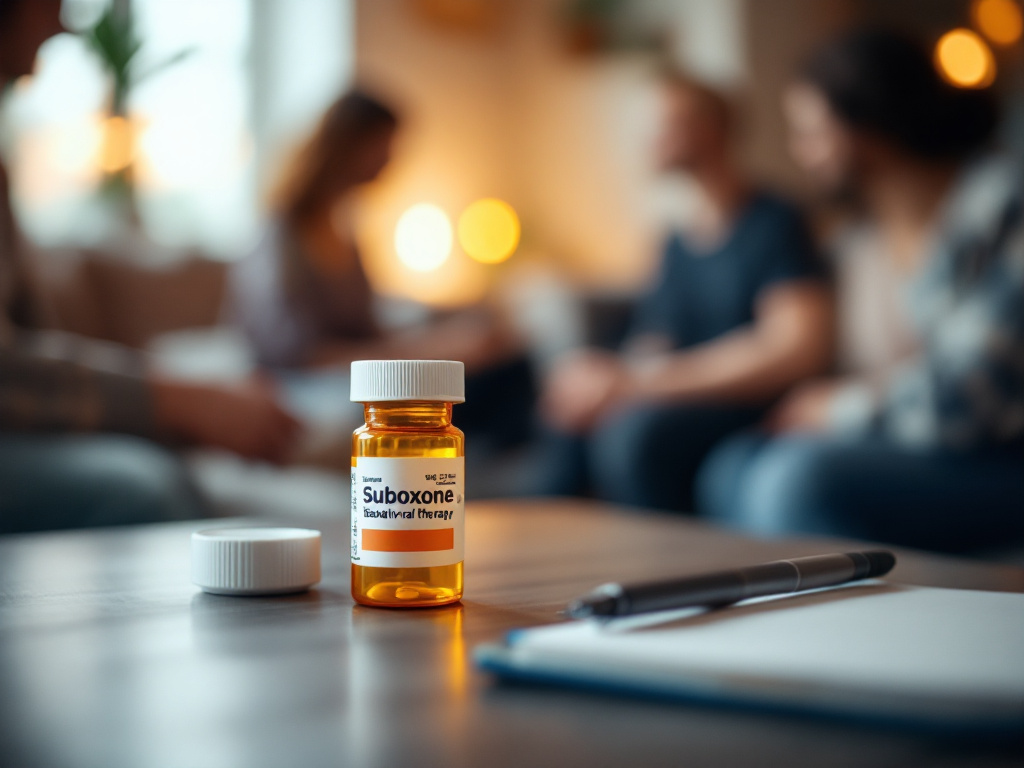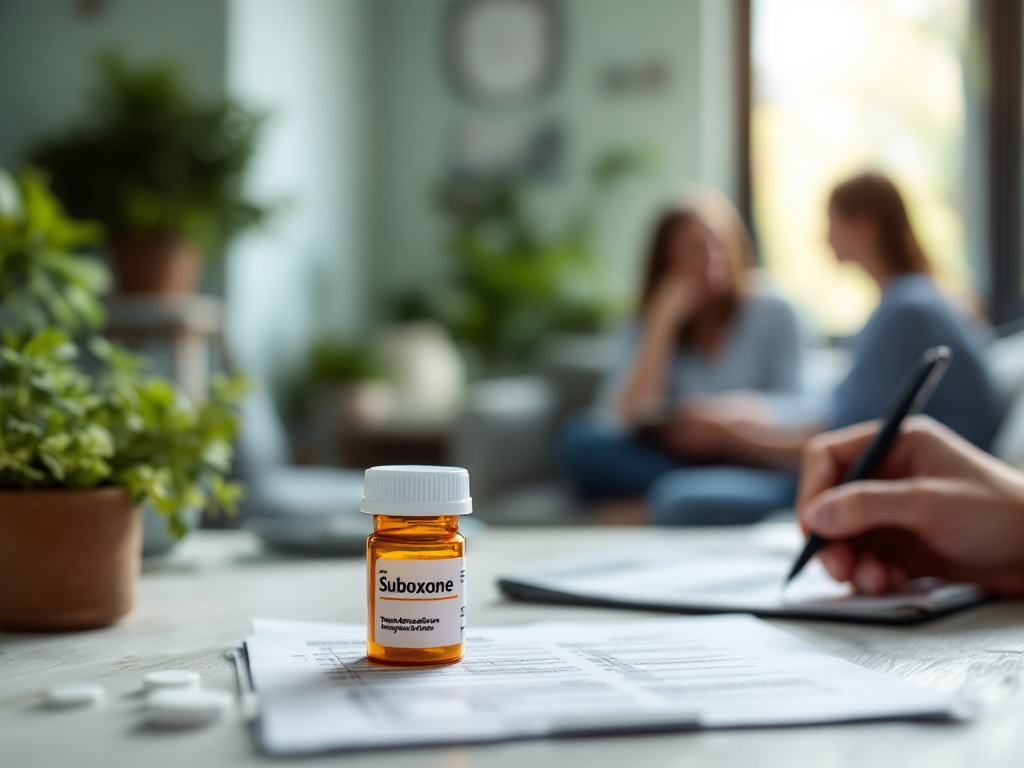Buprenorphine therapy overview
Buprenorphine therapy for opioid recovery offers a proven pathway to manage withdrawal symptoms, reduce cravings, and support lasting sobriety. When you choose this medication-assisted approach, you benefit from a partial opioid agonist that eases the transition away from more potent opioids.
Buprenorphine is approved by the U.S. Food and Drug Administration to treat acute and chronic pain as well as opioid dependence [1]. As a partial mu-opioid receptor agonist with a ceiling effect, it lowers the risk of overdose and severe respiratory depression compared to full agonists such as heroin or oxycodone [2]. Furthermore, its long receptor dissociation time provides relief for 24 to 36 hours, making daily or alternate-day dosing possible.
Key benefits of buprenorphine therapy include
- Consistent withdrawal management with fewer peaks and troughs
- Reduced cravings to improve focus on counseling and healthy routines
- Lower overdose potential due to a partial agonist ceiling effect
- Flexibility in dosing—once stabilized, you may move to alternate-day schedules [3]
As a result, you can maintain stability while engaging in therapy, work, or family life without the intense highs and lows of full agonist opioids.
Outpatient mat programs
Outpatient medication-assisted treatment (MAT) programs combine buprenorphine therapy with structured clinical support, allowing you to live at home and attend work or school. These programs follow evidence-based guidelines and regular check-ins to ensure safety and progress.
At Freedom Healthcare, our outpatient services include
- Medication dispensing and supervision
- Virtual telehealth visits via our virtual suboxone medication clinic
- In-person appointments at locations throughout the region, including Pittsburgh—find an outpatient mat provider near pittsburgh
By integrating medicine with counseling, you receive comprehensive care tailored to your lifestyle. Additionally, remote monitoring tools help clinicians track adherence and symptoms between visits, so adjustments can be made promptly.
Personalized treatment planning
Every recovery journey is unique. Your personalized plan typically unfolds in three phases:
Assessment and induction
You begin with a clinical evaluation to confirm opioid dependence and determine the right buprenorphine dose. To avoid precipitated withdrawal, you must be in early withdrawal—usually 12 to 24 hours after your last opioid use [3].
- Initial dose: 2 to 4 mg sublingually, observed for withdrawal relief [4]
- Dose adjustments made based on comfort, cravings, and side effects
Maintenance dosing
Once stabilized, you typically remain on a consistent dose for several weeks or months. Benefits of maintenance include
- Consistent receptor occupancy to curb cravings
- Improved capacity to attend therapy and rebuild daily routines
- Option to switch to alternate-day dosing
Tapering strategies
If your goal is to discontinue buprenorphine, tapering schedules vary. A landmark multi-site study compared 7-day and 28-day tapers in 516 patients. At the end of taper:
| Taper schedule | Opioid-free urine rate | Withdrawal symptoms difference |
|---|---|---|
| 7-day taper | 44 percent | No increase compared to 28 days |
| 28-day taper | 30 percent | Comparable symptom profile |
| (Source: NCBI) |
These results suggest that a shorter taper may be as effective as a longer taper without extra discomfort. For detailed guidance, explore our suboxone taper and maintenance plan.
Insurance and coverage options
Navigating insurance can feel overwhelming. Most private plans and Medicaid cover buprenorphine therapy when prescribed as part of a comprehensive MAT program. To simplify your path:
- Verify benefits through our buprenorphine treatment covered by insurance team
- Confirm Medicaid eligibility via our suboxone therapy covered by medicaid resource
- Choose an in-network provider at our outpatient mat clinic accepting insurance
With insurance verification handled before your first visit, you can focus on recovery rather than paperwork.
Immediate access pathways
Starting treatment promptly can reduce the risk of relapse. At Freedom Healthcare:
- Schedule a same day buprenorphine appointment to begin induction without delay
- Access our outpatient addiction medicine provider network for in-person evaluations
- Use telehealth for quicker initial consults and follow-ups
By lowering wait times, you maintain momentum and avoid gaps in care.
Combine counseling services
Medication lays the foundation, but counseling builds the structure for recovery. Our programs offer:
- Individual cognitive behavioral therapy to identify triggers
- Group sessions for peer support and accountability
- Family counseling to repair relationships
- Holistic options such as mindfulness and yoga
You can enroll in our suboxone and behavioral therapy program to ensure medicine and therapy work in concert.
Monitor taper outcomes
Whether you choose maintenance or tapering, monitoring progress is essential. Key metrics include:
- Regular urine drug screens
- Self-reported craving and withdrawal scales
- Counseling engagement and goal completion
Use a simple checklist to track your milestones:
- Have you attended all scheduled visits?
- Are you experiencing new or worsening symptoms?
- Have your cravings decreased over the past week?
Consistent monitoring allows your clinician to fine-tune your buprenorphine treatment plan setup.
Support long-term recovery
Your journey continues beyond stabilization. Long-term success strategies include:
- Enrollment in a suboxone maintenance outpatient program if ongoing support is needed
- A structured suboxone recovery management plan for check-ins and relapse prevention
- Participation in community support groups for sustained accountability
By combining medication, therapy, and community, you build a robust support network that empowers you to thrive.
Ready to take the next step? Schedule your same day buprenorphine appointment with Freedom Healthcare and start a tailored recovery plan that fits your life and your goals.











